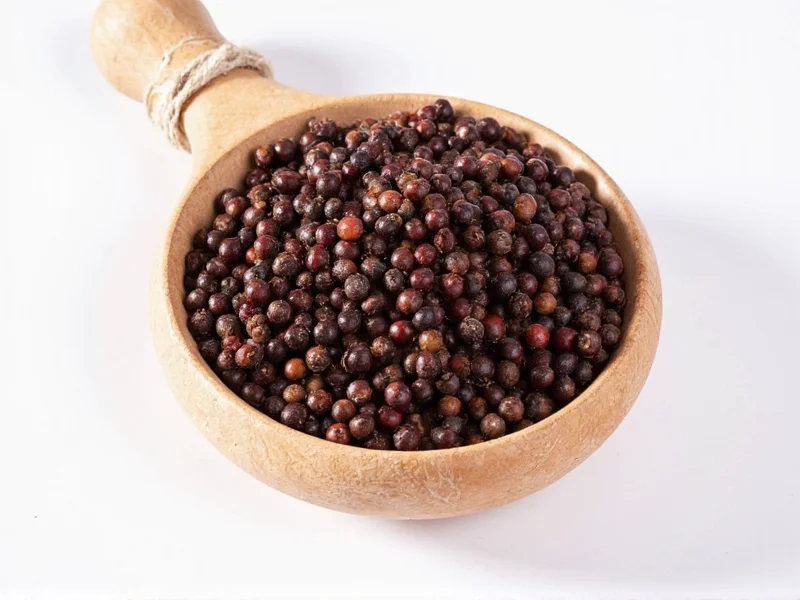For centuries, peppercorns have been one of the world's most sought-after spices, driving exploration and trade routes. Understanding where peppercorns come from reveals a fascinating botanical and historical journey that spans continents and millennia.
The Botanical Source of Peppercorns
Despite their name, peppercorns aren't actually seeds or grains—they're the fruit of Piper nigrum, a perennial climbing vine in the Piperaceae family. This tropical plant produces small, green berries that turn red when fully ripe. Each berry contains a single seed surrounded by fruit layers that determine the final peppercorn color after processing.
Geographic Origins and Major Growing Regions
While peppercorns originated in the Western Ghats of Kerala, India, commercial cultivation has expanded globally. The ideal growing conditions include:
- Tropical climates with consistent temperatures between 75-85°F (24-29°C)
- High humidity levels (70-90%)
- Well-drained, nutrient-rich soil
- Plenty of rainfall (100-150 inches annually)
| Country | Annual Production (Metric Tons) | Notable Regions | Market Share |
|---|---|---|---|
| Vietnam | 250,000 | Central Highlands | 34% |
| Indonesia | 100,000 | Sumatra, Java | 18% |
| India | 75,000 | Kerala, Karnataka | 13% |
| Brazil | 35,000 | Pará, Espírito Santo | 6% |
| Others | 180,000 | Malaysia, Cambodia, Sri Lanka | 29% |
How Different Colored Peppercorns Are Produced
The color variation in peppercorns comes entirely from processing methods, not different plant varieties:
Black Peppercorns
Harvested when berries are nearly ripe but still green, then sun-dried for 3-7 days. The outer layer (pericarp) turns black through enzymatic oxidation. This is the most common type, accounting for approximately 70% of global production. Black peppercorns from Tellicherry, India, are particularly prized for their complex flavor profile.
White Peppercorns
Allowed to fully ripen to red on the vine, then soaked in water for 7-10 days to ferment and remove the outer layer. What remains is the inner seed, which dries to a pale color. White peppercorns have a milder, less complex flavor than black. They're commonly used in light-colored sauces and dishes where black specks would be undesirable.
Green Peppercorns
Picked while still unripe and green, then preserved through freeze-drying, brining, or sulfur dioxide treatment to maintain color. Green peppercorns have a fresher, fruitier flavor with less heat than black peppercorns. They're popular in French cuisine, particularly in steak au poivre.
Red Peppercorns
The rarest variety, harvested when fully ripe and red. They're quickly freeze-dried or vacuum-sealed in brine to preserve the vibrant color. Red peppercorns have a sweet, floral flavor with subtle heat. True red peppercorns are often confused with pink peppercorns, which come from a completely different plant (Schinus molle).
A Brief History of Peppercorn Trade
Peppercorns have influenced global trade for over 4,000 years. Ancient Egyptians used them in mummification rituals as early as 1500 BCE. In Roman times, peppercorns were so valuable they were used as currency—Roman general Pliny the Elder complained about the drain of silver to India for spices.
During the Middle Ages, peppercorns became a status symbol in Europe. Wealthy households would display peppercorns at banquets, and merchants formed powerful guilds to control the spice trade. The search for direct sea routes to the "Spice Islands" drove European exploration, leading to Vasco da Gama's voyage to India in 1498.
Modern Peppercorn Production Process
Today's peppercorn production follows methods remarkably similar to ancient practices, with some modern improvements:
- Cultivation: Vines are grown on support trees or poles, reaching up to 15 feet in height
- Harvesting: Berries are picked by hand when they begin to turn red (for black) or fully red (for white/red)
- Processing: Different methods determine the final product (drying, soaking, fermenting)
- Sorting: Machines and workers sort by size, color, and quality
- Packaging: Vacuum-sealed containers preserve freshness during global transport
Unlike many agricultural products, mechanization remains limited in peppercorn production. The delicate vines and need for selective harvesting mean most work still happens by hand, supporting millions of smallholder farmers across tropical regions.
Peppercorn Quality Factors
When evaluating peppercorn quality, experts consider several factors:
- Piperine content: The compound responsible for heat (typically 4-9% in black pepper)
- Essential oils: Contribute to aroma and flavor complexity (3-6%)
- Moisture content: Should be below 12% to prevent mold
- Foreign matter: High-quality peppercorns contain less than 1% impurities
- Size uniformity: Larger peppercorns (Tellicherry grade) often command premium prices
Sustainability Challenges in Peppercorn Farming
Modern peppercorn cultivation faces several sustainability challenges:
- Climate vulnerability: Rising temperatures and unpredictable rainfall patterns affect yields
- Monoculture risks: Large plantations face increased pest and disease pressure
- Price volatility: Small farmers often receive less than 10% of the retail price
- Deforestation: Expansion of pepper farms sometimes occurs at the expense of rainforests
Organic and fair trade certification programs are growing to address these issues, with initiatives promoting shade-grown pepper under forest canopies and direct trade relationships that improve farmer incomes.
Peppercorns in Global Cuisine
Different regions use peppercorns in distinctive ways that reflect their origin and processing:
- Indian cuisine: Black peppercorns feature prominently in garam masala and many regional dishes
- French cuisine: Green peppercorns in cognac cream sauce (poivre vert)
- Chinese cuisine: White peppercorns preferred for their subtle heat in soups and sauces
- Thai cuisine: Fresh green peppercorns used in certain regional dishes
- Brazilian cuisine: Black peppercorns essential in traditional black bean stew (feijoada)
Common Misconceptions About Peppercorns
Several myths persist about peppercorns that deserve clarification:
- "All peppers come from the same plant" - False. Black, white, green, and red peppercorns come from Piper nigrum, but chili peppers belong to the Capsicum genus.
- "Peppercorns are seeds" - Technically incorrect. They're the entire fruit (berry) of the plant.
- "Spicier pepper means better quality" - Not necessarily. Heat level depends on growing conditions and doesn't correlate with overall quality.
- "Pre-ground pepper is as good as whole" - Whole peppercorns retain flavor compounds much longer than pre-ground pepper.











 浙公网安备
33010002000092号
浙公网安备
33010002000092号 浙B2-20120091-4
浙B2-20120091-4